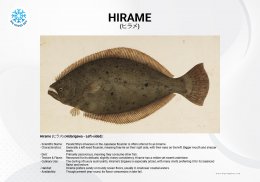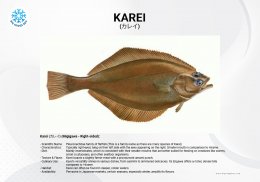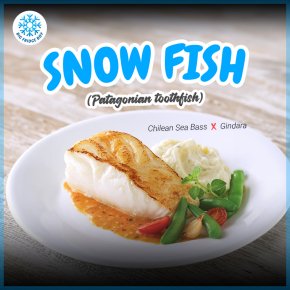“Engawa(えんがわ): A Deep Dive into Japan's Culinary Jewel”
Last updated: 20 Sep 2023 | 3318 Views |
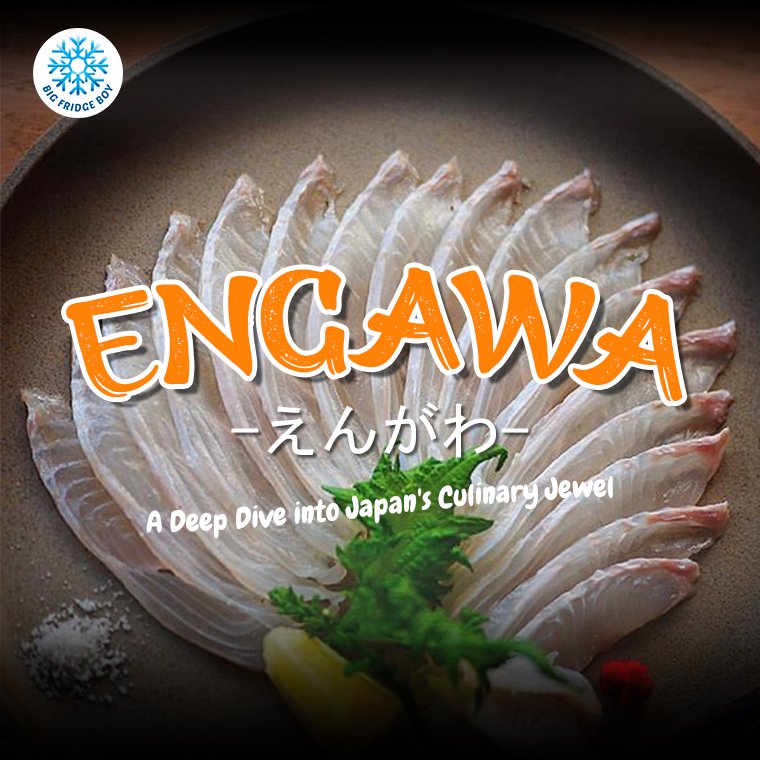
In the intricate tapestry of Japanese culinary arts, Engawa sparkles as a rare gem, embodying both the maritime essence and a tribute to age-old gourmet traditions. Amidst an ocean of terminology like Fluke Fin, Flounder, Flatfish, and Halibut, the true essence of Engawa can become obscured. This article seeks to clarify Engawa's identity and spotlight the distinctive features of its primary sources: Hirame (ヒラメ) and Karei (カレイ).
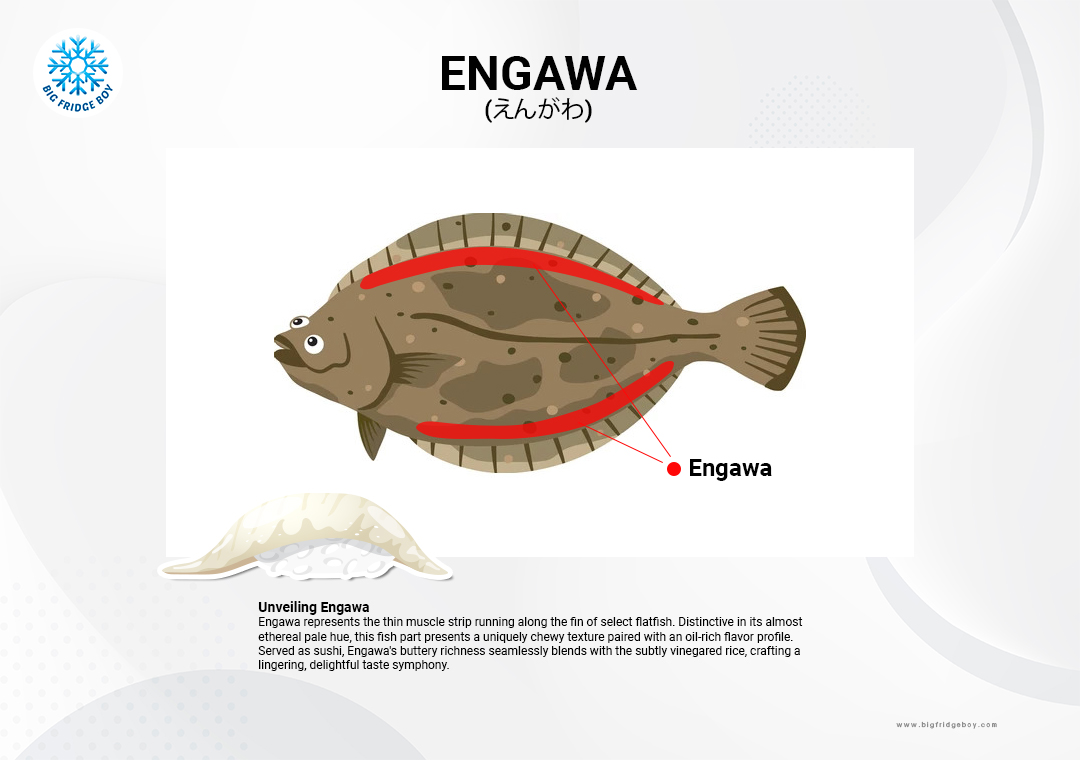
Engawa represents the thin muscle strip running along the fin of select flatfish. Distinctive in its almost ethereal pale hue, this fish part presents a uniquely chewy texture paired with an oil-rich flavor profile. Served as sushi, Engawa's buttery richness seamlessly blends with the subtly vinegared rice, crafting a lingering, delightful taste symphony.
Understanding Engawa necessitates clarifying some oft-confused terms:
- Engawa: Muscle part of the flatfish (often from flounder).
- Fluke Fin (Paralichthys dentatus): Within English-speaking sushi contexts, "Fluke Fin" stands as an Engawa equivalent. The term "Fluke" specifically alludes to the summer flounder native to the western Atlantic. In Engawa discussions, it indicates that unique muscle, especially when originating from the fluke.
- Flatfish: A general term describing various fish species characterized by flattened bodies and a unique eye orientation on one side. This group comprises species like flounder, halibut, plaice, sole, and turbot, among others.
- Flounder: This refers to a subset of the broad flatfish category. Misunderstandings arise when flounder and flatfish are used interchangeably.
- Halibut (Hippoglossus spp.): A member of the flatfish family, halibut is sometimes erroneously equated with Engawa. Although Engawa can be sourced from halibut, it's but one of the many flatfish species that can produce this delicacy.
Hirame vs. Karei: The Two Icons of Engawa
Central to Engawa are two esteemed flatfish: Hirame (ヒラメ) and Karei (カレイ). Each offers a distinct facet to the Engawa experience, marked by variations in texture, taste, and culinary narratives.

Hirame (ヒラメ) (Hidarigawa - Left-sided):
- Scientific Name: Paralichthys olivaceus or the Japanese flounder is often referred to as Hirame.
- Characteristics: Generally a left-eyed flounder, meaning they lie on their right side, with their eyes on the left. Bigger mouth and sharper teeth.
- Diet: Primarily piscivorous, meaning they consume other fish.
- Texture & Flavor: Renowned for its delicate, slightly chewy consistency, Hirame has a milder yet sweet undertone.
- Culinary Use: The darling of luxury sushi joints, Hirame's Engawa is especially prized, with many chefs preferring it for its balanced flavor and texture.
- Habitat: Hirame prefers sandy or muddy ocean floors, usually in shallower coastal waters.
- Availability: Though present year-round, its flavor crescendos in late fall.
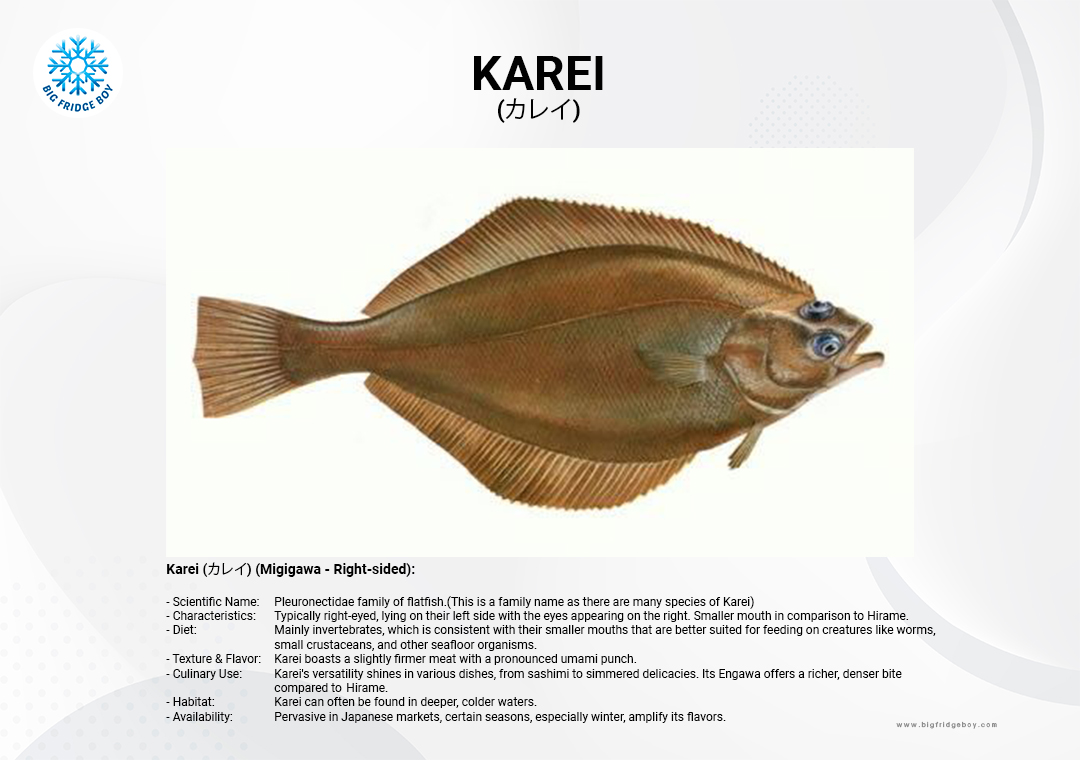
Karei (カレイ) (Migigawa - Right-sided):
- Scientific Name: Pleuronectidae family of flatfish.(This is a family name as there are many species of Karei)
- Characteristics: Typically right-eyed, lying on their left side with the eyes appearing on the right. Smaller mouth in comparison to Hirame.
- Diet: Mainly invertebrates, which is consistent with their smaller mouths that are better suited for feeding on creatures like worms, small crustaceans, and other seafloor organisms.
- Texture & Flavor: Karei boasts a slightly firmer meat with a pronounced umami punch.
- Culinary Use: Karei's versatility shines in various dishes, from sashimi to simmered delicacies. Its Engawa offers a richer, denser bite compared to Hirame.
- Habitat: Karei can often be found in deeper, colder waters.
- Availability: Pervasive in Japanese markets, certain seasons, especially winter, amplify its flavors.
It's essential to understand that "Hirame" and "Karei" can sometimes refer to specific species, but they can also be general terms for right-eyed and left-eyed flatfish, respectively. It's also worth noting that these distinctions and naming conventions might vary depending on regional preferences and terminologies.


